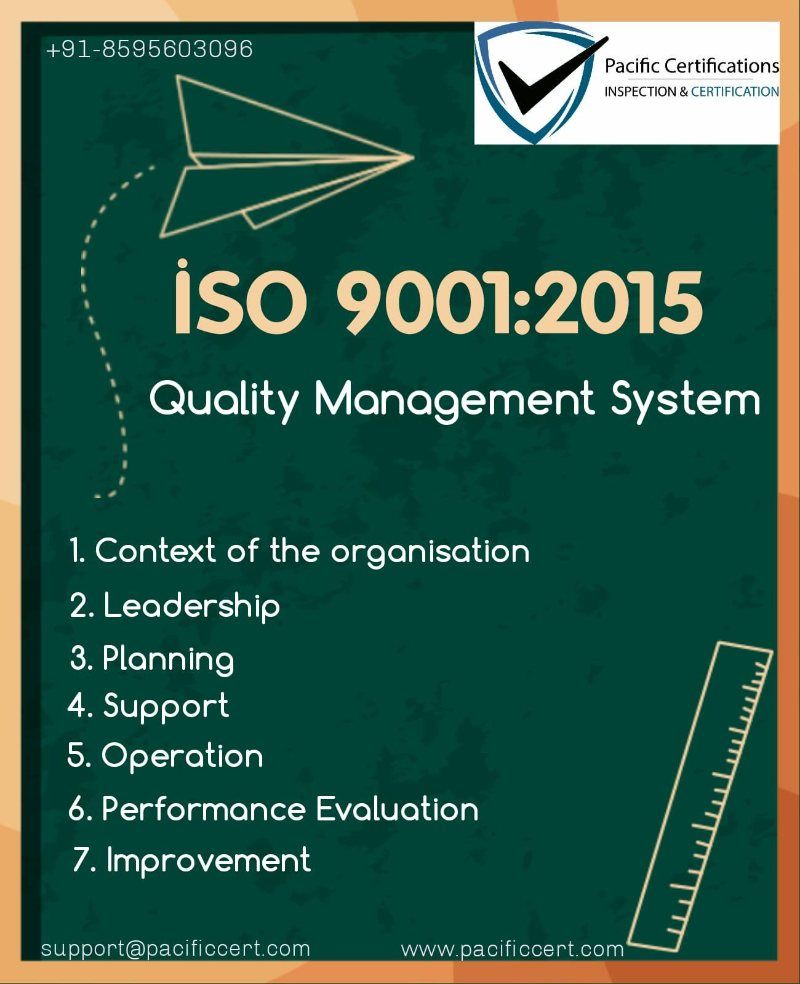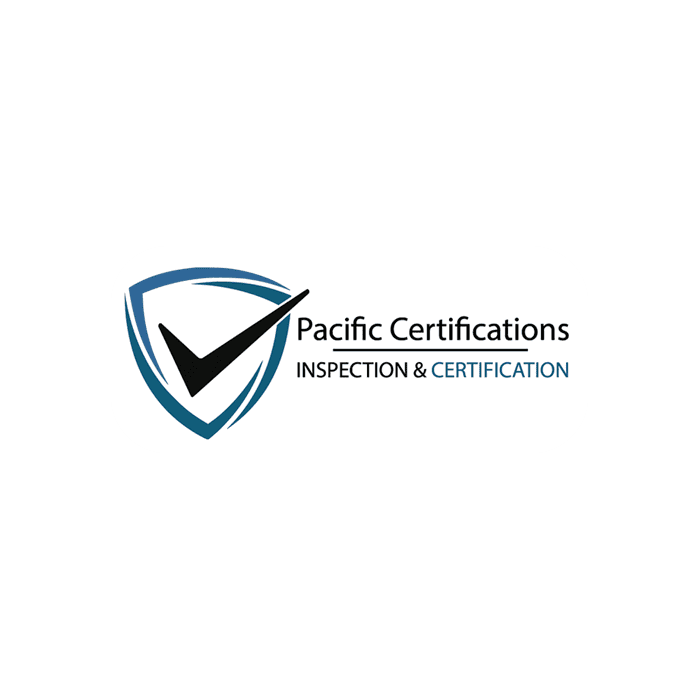What is ISO 9001:2015?

ISO 9001:2015 is an international standard for quality management systems (QMS) developed by the International Organization for Standardization (ISO). It provides a framework for organizations to establish, implement, maintain, and continually improve their quality management systems.
The standard sets out criteria for a systematic approach to quality management and is applicable to any organization, regardless of its size or the industry it operates in. ISO 9001:2015 focuses on customer satisfaction and emphasizes the importance of meeting customer requirements and enhancing customer satisfaction through the effective application of the QMS.
Some key principles and requirements of ISO 9001 include:
Context of the organization:
Leadership
Planning
Support
Operation
Performance evaluation
Improvement
ISO 9001:2015 certification is voluntary and can be sought by organizations to demonstrate their commitment to quality management and meet customer expectations. It is widely recognized and respected internationally, and achieving certification can provide organizations with a competitive advantage.
How to get ISO 9001:2015 Certified?
To obtain ISO 9001:2015 certification, organizations need to follow a series of steps. Here is a general overview of the process:
Understand the Standard: Familiarize yourself with the requirements of ISO 9001:2015. Read the standard thoroughly and understand its principles, processes, and expectations.
Gap Analysis: Conduct a gap analysis to assess your organization's current practices against the requirements of ISO 9001:2015. Identify areas where your existing quality management system aligns with the standard and areas that require improvement.
Develop an Implementation Plan: Create a detailed plan that outlines the steps, responsibilities, and timeline for implementing the ISO 9001:2015 requirements. Consider the resources, training, and support needed for successful implementation.
Establish a Quality Management System: Develop and implement a quality management system that meets the requirements of ISO 9001:2015. This involves defining processes, documenting procedures, and establishing controls to ensure compliance with the standard.
Internal Audit: Conduct internal audits to evaluate the effectiveness and compliance of your quality management system. Identify areas for improvement and take corrective actions as necessary.
Management Review: Hold regular management reviews to assess the performance of the quality management system, review audit results, and make decisions regarding improvements and resource allocation.
Select a Certification Body: Choose an accredited certification body to conduct an external audit of your quality management system. Ensure that the certification body is recognized and authorized to issue ISO 9001:2015 certificates.
Stage 1 Audit: The certification process typically involves two audits. The stage 1 audit is a preliminary assessment conducted to evaluate your organization's readiness for the certification process. The auditor reviews your documentation, processes, and implementation plan.
Stage 2 Audit: The stage 2 audit is the main certification audit where the certification body evaluates the implementation and effectiveness of your quality management system. The auditor will conduct interviews, review records, and assess compliance with the standard requirements.
Certification Decision: Based on the audit findings, the certification body will make a decision regarding the certification. If your organization meets the requirements, you will be awarded ISO 9001:2015 certification.
Surveillance Audits: After certification, the certification body will conduct periodic surveillance audits (usually annually) to ensure that your organization continues to maintain and improve the quality management system.
What is the last step in ISO 9001:2015 registration?
In ISO 9001:2015, the last step in the registration process is the issuance of the ISO 9001:2015 certificate by the certification body. Once your organization has successfully completed the stage 2 audit and demonstrated compliance with the requirements of QMS, the certification body will review the audit findings and make a certification decision.
If your organization meets the requirements, the certification body will issue the ISO 9001:2015 certificate. This certificate serves as formal recognition that your organization has implemented a compliant quality management system and has achieved ISO 9001:2015 certification.
The certificate typically includes information such as the organization's name, address, scope of certification, and the certification body's details. It is a tangible proof of your organization's commitment to quality management and can be displayed, shared with stakeholders, or used for marketing purposes to showcase your compliance with internationally recognized standards.
It's important to note that ISO 9001:2015 certification is valid for a specific period of three years. During this period, the certification body may conduct surveillance audits to ensure that your organization continues to maintain and improve its quality management system.
To maintain the QMS certification beyond the initial certification period, organizations must undergo regular surveillance audits and, upon expiration, seek recertification by repeating the certification process.
Why ISO 9001 is 2015?
ISO 9001:2015 is the latest version of the ISO 9001 standard, which is periodically revised to ensure its relevance and effectiveness in addressing the evolving needs of organizations and the business environment, ISO 9001 was last revised in the year 2015, Earlier version was ISO 9001:2018.
Here are some reasons behind the release of ISO 9001:2015 the latest updation from 2008 version:
Continual Improvement: ISO 9001:2015 emphasizes a stronger focus on continual improvement, promoting a proactive approach to quality management rather than a reactive one. The standard encourages organizations to identify and address risks and opportunities, drive process enhancements, and strive for ongoing improvement in customer satisfaction.
Alignment with Other Management System Standards: New version of ISO 9001 follows a high-level structure known as Annex SL, which provides a consistent framework for various ISO management system standards. This alignment makes it easier for organizations to integrate ISO 9001 with other management systems, such as ISO 14001 (environmental management) or ISO 45001 (occupational health and safety).
Context and Stakeholder Considerations: ISO 9001:2015 places increased emphasis on understanding the context of the organization and identifying relevant interested parties than the previous version 2008. This approach encourages organizations to consider the broader business environment, including the needs and expectations of customers, suppliers, employees, regulators, and other stakeholders.
Risk-Based Thinking: ISO 2015 version incorporates risk-based thinking throughout the standard. Organizations are required to identify and address risks and opportunities that could affect the achievement of quality objectives. This proactive approach helps organizations mitigate risks, prevent quality issues, and make informed decisions to improve performance.
Leadership and Engagement: The 2015 version highlights the role of top management in leading and promoting a quality culture within the organization. It emphasizes leadership commitment, engagement of employees at all levels, and the importance of a customer-focused approach in achieving quality objectives.
Simplified Language and Documentation: ISO 9001:2015 aims to simplify language and reduce documentation requirements, making it more accessible and applicable to organizations of all sizes and industries. The focus is on achieving results rather than extensive documentation, allowing organizations to tailor their quality management system to their specific needs.
ISO 9001: 2015 aims to enhance the effectiveness, relevance, and applicability of the standard, supporting organizations in improving their quality management practices, meeting customer expectations, and driving continual improvement.
If you need more support with ISO 9001:2015, please contact us at +91-8595603096 or [email protected]

Read more: ISO certification for Funds Management Services and applicable standards
